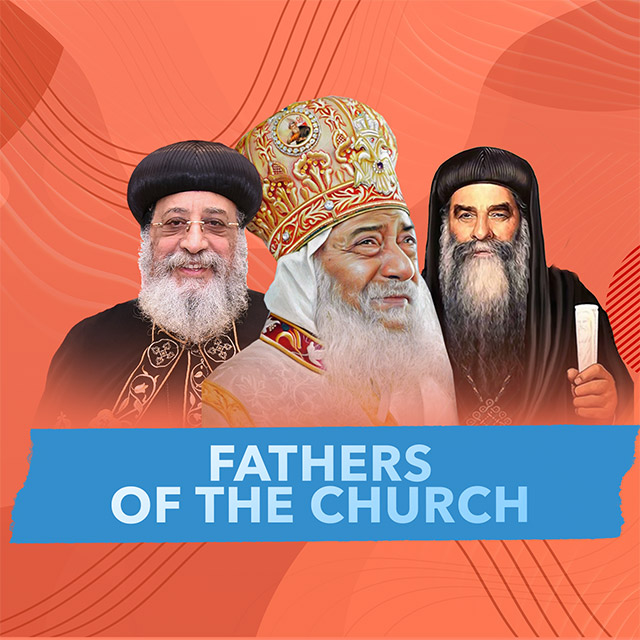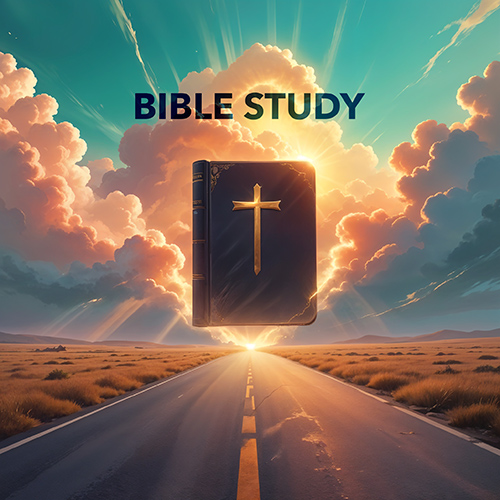• In ancient times, God granted life to the clothes of the Israelites during their time in the wilderness; their clothes did not wear out but grew with their bodies. How much more, then, did He grant life to His own clothes, which He wore? He bestowed life upon them, causing them to shine with light, whiter than snow. He ascended the mountain as a servant, but we saw Him on the mountain as a revered God, whom the Father called “My Son.” • When the Lord of Glory was on trial, He said to Pilate about Himself: “No one takes it from Me, but I lay it down of My own accord. I have authority to lay it down and authority to take it up again. This command I received from My Father.” Christ demonstrated this authority through the Transfiguration. He ascended the mountain humbly, and there He lifted Himself up, revealing some of His glory through the Transfiguration. After the spiritual encounter ended, He descended the mountain, returning to His self-abasement. He exercised His authority over His own glory because, in His union with the Father, He possesses this authority. This is why He said, “This command I received from My Father,” and it is not a command as we understand the word, but rather the authority the Father has given to the Son. Thus, the Transfiguration was a prelude to the revelation of the Son’s authority and His essential union with the Father. • The Father called His Son three times: 1. When He emerged from the waters of baptism, the Father called out, “This is My beloved Son, with whom I am well pleased.” This is the one I sent for the salvation of My beloved ones in the world. This is My incarnate Son, the servant of salvation. 2. On the mountain, the Father’s call to His Son was different. Moses represented the Law, and Elijah represented the prophets, but the Father transferred all the Jews from faith in what was written by Moses and the prophets to faith in the person of Christ Himself, who is written about in the Scriptures. He said to the people, “This is My beloved Son, listen to Him.” Move from Moses and the prophets to My Son, and listen to His Gospel and live by hearing His voice. This is the truth and the Law itself. This is the fulfillment of the Law. In Christ, the prophecies of the prophets are fulfilled, and He is transfigured before the prophets. Therefore, listen to My Son and hear Him, for He is a divine Person, the Son of God. 3. The third time, Christ was praying for us in the garden, and His sweat was falling like drops of blood. Forty days after the Transfiguration, the One who was emitting light, not from the sun, stood interceding for us. He stood in our place as a servant, bearing our sins once and for all for our salvation. The true Light bore our darkness. Therefore, the Father did not call Him “My Son” because in that scene, Christ was standing in for sinners and the lost so that the Father’s name might be glorified before us and within us. Therefore, the Son prayed, saying, “Father, glorify Your name,” not “Glorify Your Son,” because He was speaking about the work of salvation, not about Himself. And the Father answered, “I have glorified it, and will glorify it again.” Here, the Holy Father affirms His approval of the work that has been accomplished and what will be accomplished after this prayer. • Three times the Father addressed His Son: once addressing His humanity, once addressing His divinity, and once addressing the work for which His divinity and humanity were united in His unique person. In the Transfiguration, the authority of Christ, the Son of God, is revealed—He who holds the keys of death and life. The Kingdom is under His authority, and so is Hades. Just as He ascended Elijah to heaven in a fiery chariot, He brought him down from heaven onto Mount Tabor. By His authority, He brought him down and then returned him, preserving him for a sacred mission. By His authority, He brought Moses the prophet up from Hades. Do not be surprised that all who died before salvation went into Hades with the hope of resurrection, waiting for salvation. Christ, by His authority, released Moses from Hades and brought him to Mount Tabor. After their conversation, He returned Moses to his place to wait a little longer until, after Christ’s death, He would descend into Hades and take Adam and his children in procession to paradise. The Transfiguration revealed Christ’s divine authority over all natures, places, and boundaries—heaven, earth, and Hades. Perhaps at that time, Moses and Elijah said to Him, “You are the One whom the heavens, the earth, and what is under the earth glorify.” The Transfiguration will remain an eternal feast in which we participate, so let us prepare and not sleep but remain spiritually vigilant and praise the Almighty.
Related Knowledge Base Posts
- Why do demons ake control of some people? (4 minutesread)
- How did we receive the Holy Scriptures?, what is the composition of the bible? (1 minuteread)
- How the Old Testament Books Came to Us: (1 minuteread)
- What is the truth behind the Guardian Angel in the Orthodox Church? (2 minutesread)
- What are the main features about the Coptic Calendar of Martyrs? (2 minutesread)
- What is the Church’s ruling on a person who leaves their faith and then returns?* (1 minuteread)
- What are the signs of the second coming? (5 minutesread)
- How did Saint Augustin describe his mother? (1 minuteread)
- What are the various names of God in the Bible? (3 minutesread)
- What are the Seven Sorrows in the Life of the Holy Virgin Mary? (1 minuteread)
- Glory to God, so why do we glorify the Virgin Mary? (2 minutesread)
- Can you give us a brief history of Egypt through the Ages? (3 minutesread)
- What is the meaning of Lighting Candles in the Church? (3 minutesread)
- What happened to those who attacked the Holy Bible, and what happened to their ideas? (2 minutesread)
- Why were Moses and Elijah with Christ on the Mount of Transfiguration? (2 minutesread)
- Can you explain the creatures mentioned in Chapter 13 of the Book of Revelation? (4 minutesread)
- Is there a conflict between God and Money? (6 minutesread)
- What is the Christianity’s view on Magic? (2 minutesread)
- Why would God allow Satan to tempt him? (2 minutesread)














